Preface
Contents
A Note to Instructors
Introduction
Book Organization
Complementary Readings
References
Binary and M-ary Hypothesis Testing
Introduction
Bayesian Binary Hypothesis Testing
Sufficient Statistics
Receiver Operating Characteristic
Neyman-Pearson Tests
ROC Properties
Minimax Hypothesis Testing
Gaussian Detection
Known Signals in Gaussian Noise
Detection of a Zero-Mean Gaussian Signal in Noise
M-ary Hypothesis Testing
Bayesian M-ary Tests
Sufficient Statistics for M-ary Tests
Performance Analysis
Bounds Based on Pairwise Error Probability
Bibliographical Notes
Problems
References
Tests with Repeated Observations
Introduction
Asymptotic Performance of Likelihood Ratio Tests
Bayesian Sequential Hypothesis Testing
Sequential Probability Ratio Tests
Optimality of SPRTs
Bibliographical Notes
Problems
Proof of Cramér's Theorem
References
Parameter Estimation Theory
Introduction
Bayesian Estimation
Optimum Bayesian Estimator
Properties of the MSE Estimator
Linear Least-squares Estimation
Estimation of Nonrandom Parameters
Bias
Sufficient Statistic
Cramér-Rao Lower Bound
Uniform Minimum Variance Unbiased Estimates
Asymptotic Behavior of ML Estimates
Consistency
Asymptotic Distribution of the ML Estimate
Bibliographical Notes
Problems
Derivation of the RBLS Theorem
References
Composite Hypothesis Testing
Introduction
Uniformly Most Powerful Tests
Invariant Tests
Linear Detection with Interfering Sources
Generalized Likelihood Ratio Tests
Asymptotic Optimality of the GLRT
Multinomial Distributions
Exponential Families
Bibliographical Notes
Problems
Proof of Sanov's Theorem
References
Robust Detection
Introduction
Measures of Model Proximity
Robust Hypothesis Testing
Robust Bayesian and NP Tests
Clipped LR Tests
Asymptotic Robustness
Least Favorable Densities
Robust Asymptotic Test
Robust Signal Detection
Least-Favorable Densities
Receiver Structure
Bibliographical Notes
Problems
References
Karhunen-Loève Expansion of Gaussian Processes
Introduction
Orthonormal Expansions of Deterministic Signals
Eigenfunction Expansion of Covariance Kernels
Properties of Covariance Kernels
Decomposition of Covariance Matrices/Kernels
Differential Characterization of the Eigenfunctions
Gaussian Reciprocal Processes
Partially Observed Gaussian Reciprocal/Markov Processes
Rational Stationary Gaussian Processes
Karhunen-Loève Decomposition
Asymptotic Expansion of Stationary Gaussian Processes
Bibliographical Notes
Problems
References
Detection of Known Signals in Gaussian Noise
Introduction
Binary Detection of Known Signals in WGN
Detection of a Single Signal
General Binary Detection Problem
M-ary Detection of Known Signals in WGN
Detection of Known Signals in Colored Gaussian Noise
Singular and Nonsingular CT Detection
Generalized Matched Filter Implementation
Computation of the Distorted Signal g(t)
Noise Whitening Receiver
Bibliographical Notes
Problems
References
Detection of Signals with Unknown Parameters
Introduction
Detection of Signals with Unknown Phase
Signal Space Representation
Bayesian Formulation
GLR Test
Detector Implementation
Detection of DPSK Signals
Detection of Signals with Unknown Amplitude and Phase
Bayesian Formulation
GLR Test
Detection with Arbitrary Unknown Parameters
Waveform Parameter Estimation
Detection of Radar Signals
Equivalent Baseband Detection Problem
Cramér-Rao Bound
ML Estimates and GLR Detector
Ambiguity Function Properties
Bibliographical Notes
Problems
References
Detection of Gaussian Signals in WGN
Introduction
Noncausal Receiver
Receiver Structure
Smoother Implementation
Causal Receiver
Asymptotic Stationary Gaussian Test Performance
Asymptotic Equivalence of Toeplitz and Circulant Matrices
Mean-square Convergence of ST
Large Deviations Analysis of the LRT
Detection in WGN
Bibliographical Notes
Problems
References
EM Estimation and Detection of Gaussian Signals with Unknown Parameters
Introduction
Gaussian Signal of Unknown Amplitude in WGN of Unknown Power
EM Parameter Estimation Method
Motonicity Property
Example
Convergence Rate
Large-Sample Covariance Matrix
Parameter Estimation of Hidden Gauss-Markov Models
EM iteration
Double-sweep smoother
Example
GLRT Implementation
Bibliographical Notes
Problems
References
Detection of Markov Chains with Known Parameters
Introduction
Detection of Completely Observed Markov Chains
Notation and Background
Binary Hypothesis Testing
Asymptotic Performance
Detection of Partially Observed Markov Chains
MAP Sequence Detection
Pointwise MAP Detection
Example: Channel Equalization
Markov Chain Model
Performance Analysis
Bibliographical Notes
Problems
References
Detection of Markov Chains with Unknown Parameters
Introduction
GLR Detector
Model
GLR Test
Per Survivor Processing
Path Extension
Parameter Vector Update
EM Detector
Forward-backward EM
EM Viterbi Detector
Example: Blind Equalization
Convergence Analysis
Convergence Rate
Bibliographical Notes
Problems
References
Index
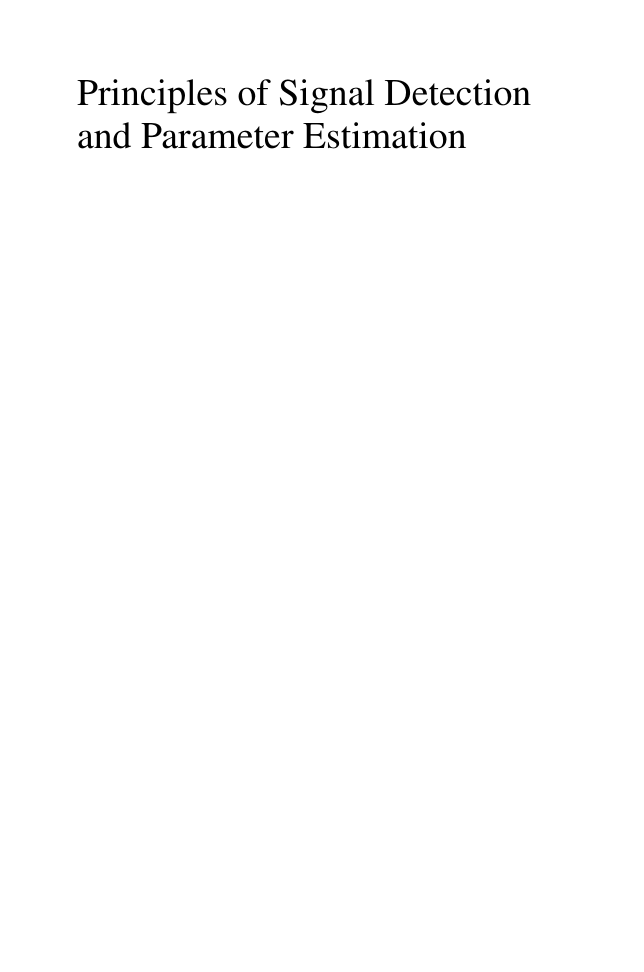
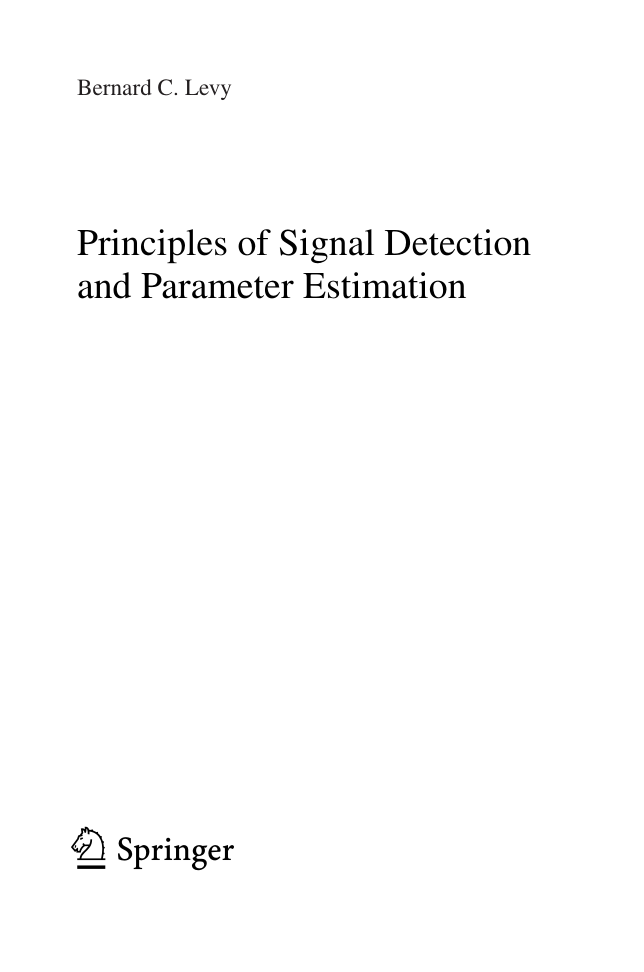


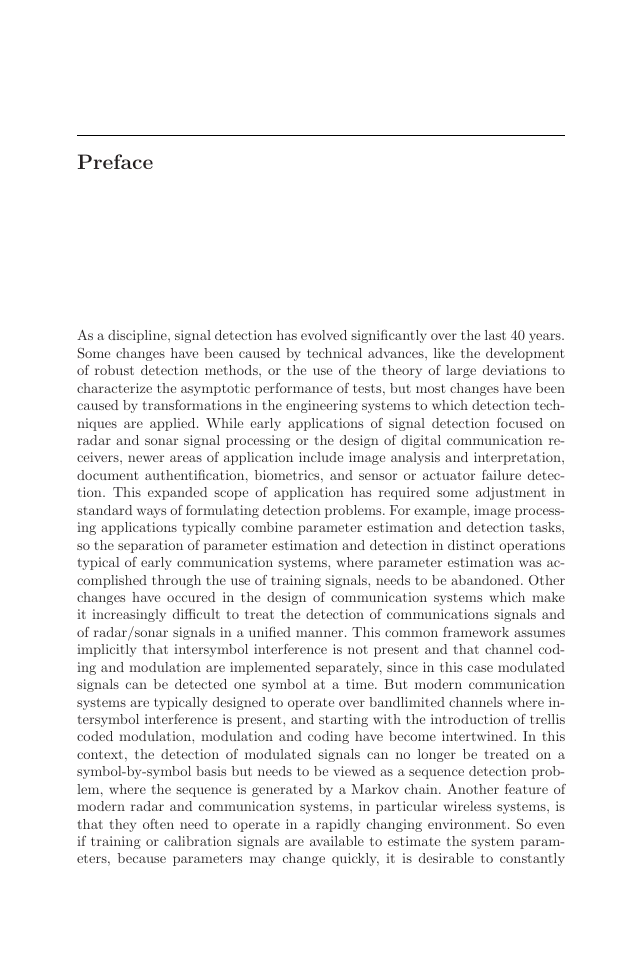
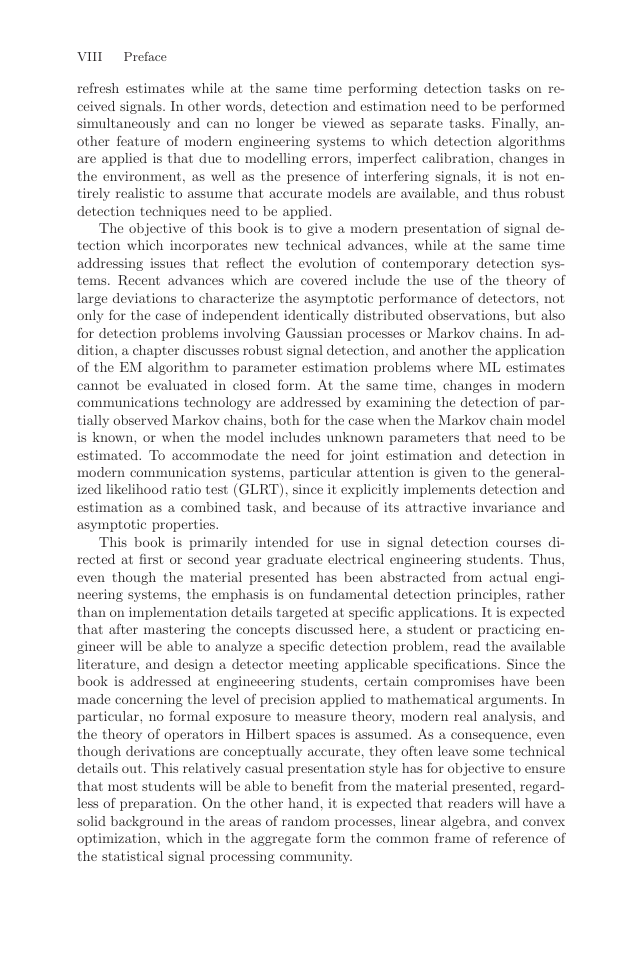

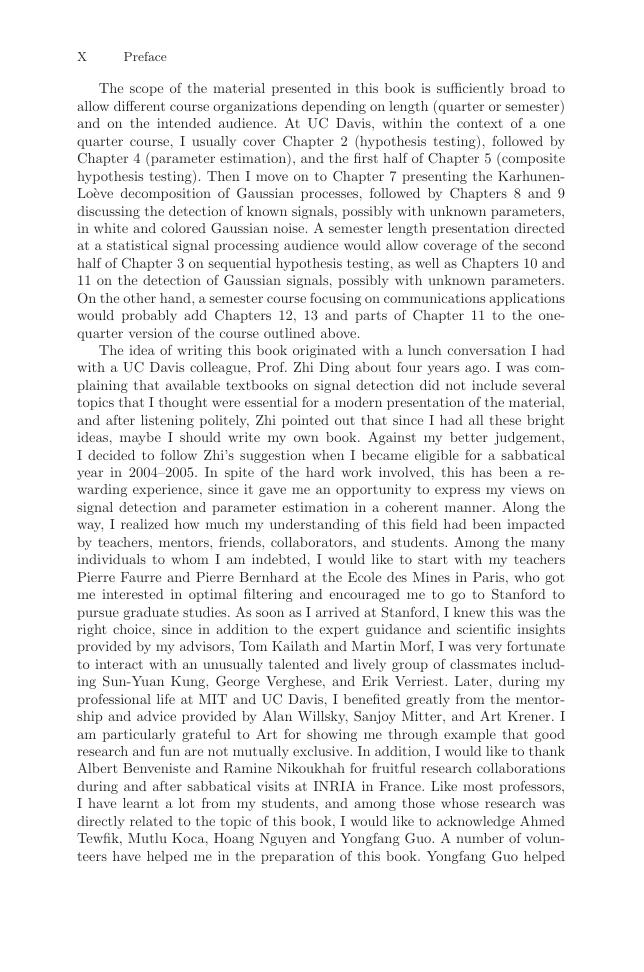








 2023年江西萍乡中考道德与法治真题及答案.doc
2023年江西萍乡中考道德与法治真题及答案.doc 2012年重庆南川中考生物真题及答案.doc
2012年重庆南川中考生物真题及答案.doc 2013年江西师范大学地理学综合及文艺理论基础考研真题.doc
2013年江西师范大学地理学综合及文艺理论基础考研真题.doc 2020年四川甘孜小升初语文真题及答案I卷.doc
2020年四川甘孜小升初语文真题及答案I卷.doc 2020年注册岩土工程师专业基础考试真题及答案.doc
2020年注册岩土工程师专业基础考试真题及答案.doc 2023-2024学年福建省厦门市九年级上学期数学月考试题及答案.doc
2023-2024学年福建省厦门市九年级上学期数学月考试题及答案.doc 2021-2022学年辽宁省沈阳市大东区九年级上学期语文期末试题及答案.doc
2021-2022学年辽宁省沈阳市大东区九年级上学期语文期末试题及答案.doc 2022-2023学年北京东城区初三第一学期物理期末试卷及答案.doc
2022-2023学年北京东城区初三第一学期物理期末试卷及答案.doc 2018上半年江西教师资格初中地理学科知识与教学能力真题及答案.doc
2018上半年江西教师资格初中地理学科知识与教学能力真题及答案.doc 2012年河北国家公务员申论考试真题及答案-省级.doc
2012年河北国家公务员申论考试真题及答案-省级.doc 2020-2021学年江苏省扬州市江都区邵樊片九年级上学期数学第一次质量检测试题及答案.doc
2020-2021学年江苏省扬州市江都区邵樊片九年级上学期数学第一次质量检测试题及答案.doc 2022下半年黑龙江教师资格证中学综合素质真题及答案.doc
2022下半年黑龙江教师资格证中学综合素质真题及答案.doc